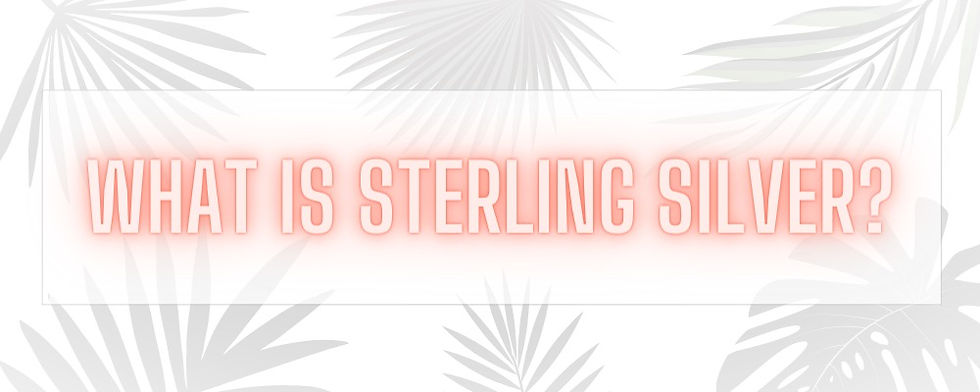What is Sterling Silver?
- binichohan
- Feb 9, 2022
- 3 min read
Updated: Apr 22, 2022

It’s that time of the month (no, not ‘shark week’ 🤣) where I get to geek out and help you all master the ins and outs of Sterling Silver jewellery.
My first blog post in this series was What is Gold Filled, where we looked at the differences between different types of gold jewellery and the benefits of picking Gold Filled over the plated version, and today’s blog post goes along the same lines, but for (you’ve guessed it) Sterling Silver 😁
The Basics…
So lets get down, lets get down to business – There are three main types of Silver used for Jewellery. The first is Pure Silver, which is 99.9% silver, with the rest being trace amounts of “impurities” which can be any other base metal such as brass, nickel, copper etc.
Pure silver, which is also known as fine silver, isn’t often used for jewellery because it is quite soft for a metal – Just around 2 on the Mohs scale. Because it is so soft, it is difficult to make items if they require a specific shape, and it also means that things made from pure/fine silver are not durable. Useless for jewellery 🤷♀️

The Quality Stuff...
This brings us neatly to our second type of Silver… Sterling! Sterling silver is 92.5% silver, with the remaining 7.5% being copper.
The copper is added to increase the hardness, taking it up to a 3 on the Mohs scale – With pure gold being 2.5. The addition of copper makes the silver more durable and malleable – Perfect for jewellery!
You can often see Sterling silver jewellery hallmarked with a “925” stamp. This means that this jewellery has been tested and proven to be of the legally required weight and quality by one of the 4 UK Assay Offices. It’s all very proper don’t you know 💁🏽👑
Don't hate the game, hate the plated...
Any silver piece that doesn’t have the 925 stamp is more than likely plated jewellery. The plated stuff has a base metal of copper, nickel or brass, coated in a thin layer of silver – Usually between 0.25 to 2 microns thick. The process is called electroplating, or flash plating, where the piece of jewellery is formed using the base metal, and essentially dipped into chemical compounds to help the silver particles to bond to the metal. A fascinating process which needs its own blog post for sure!
Silver plated jewellery will flake and tarnish with wear. As the thin plating wears away, it exposes the base metal which then oxidises – This is what makes your skin go green, and is also the most likely to cause skin reactions such as contact dermatitis. I don’t know about you, but I don’t personally rate itchy green skin so I avoid plated jewellery like the plague!
So how do you tell the difference?

There’s a simple trick you can try to help you figure out the real from the fake, and to help you avoid looking like a peeling Hulk. All you’ll need is a magnet and the piece of jewellery you're suspicious about... If the jewellery sticks to the magnet, then it’s not silver! How cool is that? Science is bae 😍
So now you know the differences between the silvers, what they’re made up from, how hard they are, and that Sterling is the best option when it comes to silver jewellery. What’s not to like? It’s built to last forever (Buh-bye fast fashion), looks beautiful and is even harder and stronger than solid gold 👀
We 💖 Sterling silver!
Check out our Sterling silver jewellery collection, and treat yourself with 10% off your first order by using code BINI10. Now go shine like a sexy silver Goddess! ❤
Until next time...
Love,
Bini xx



Comments